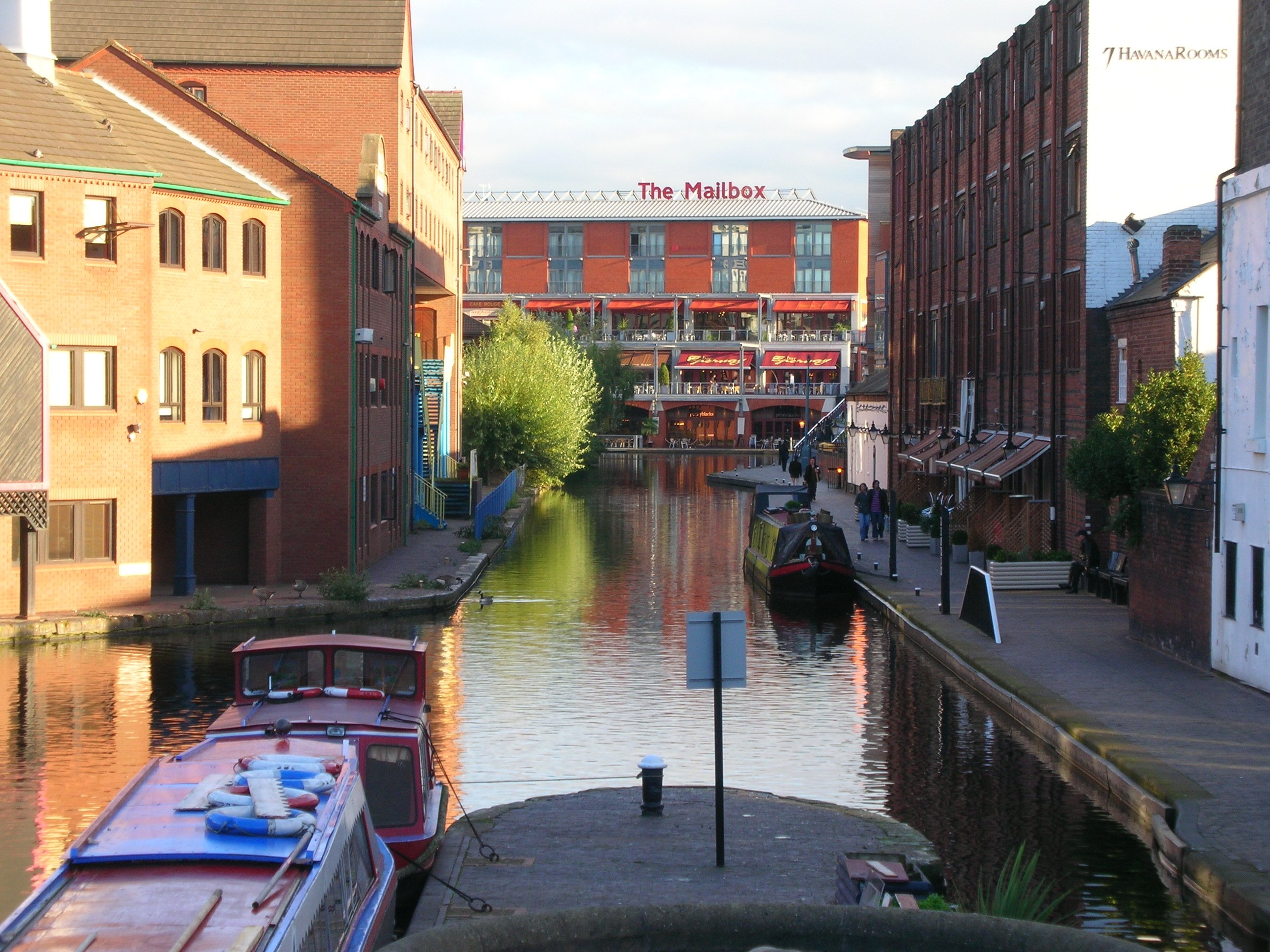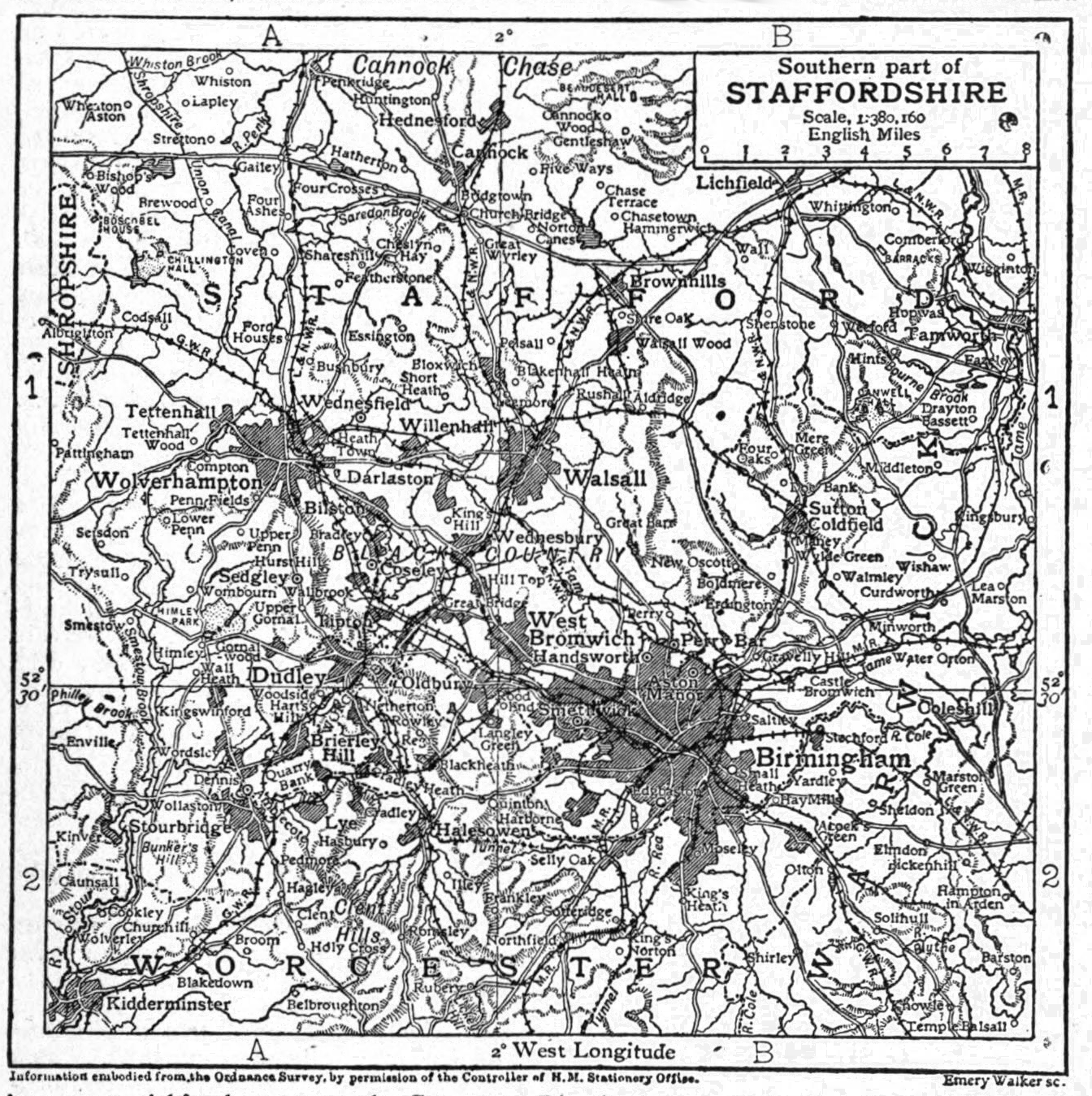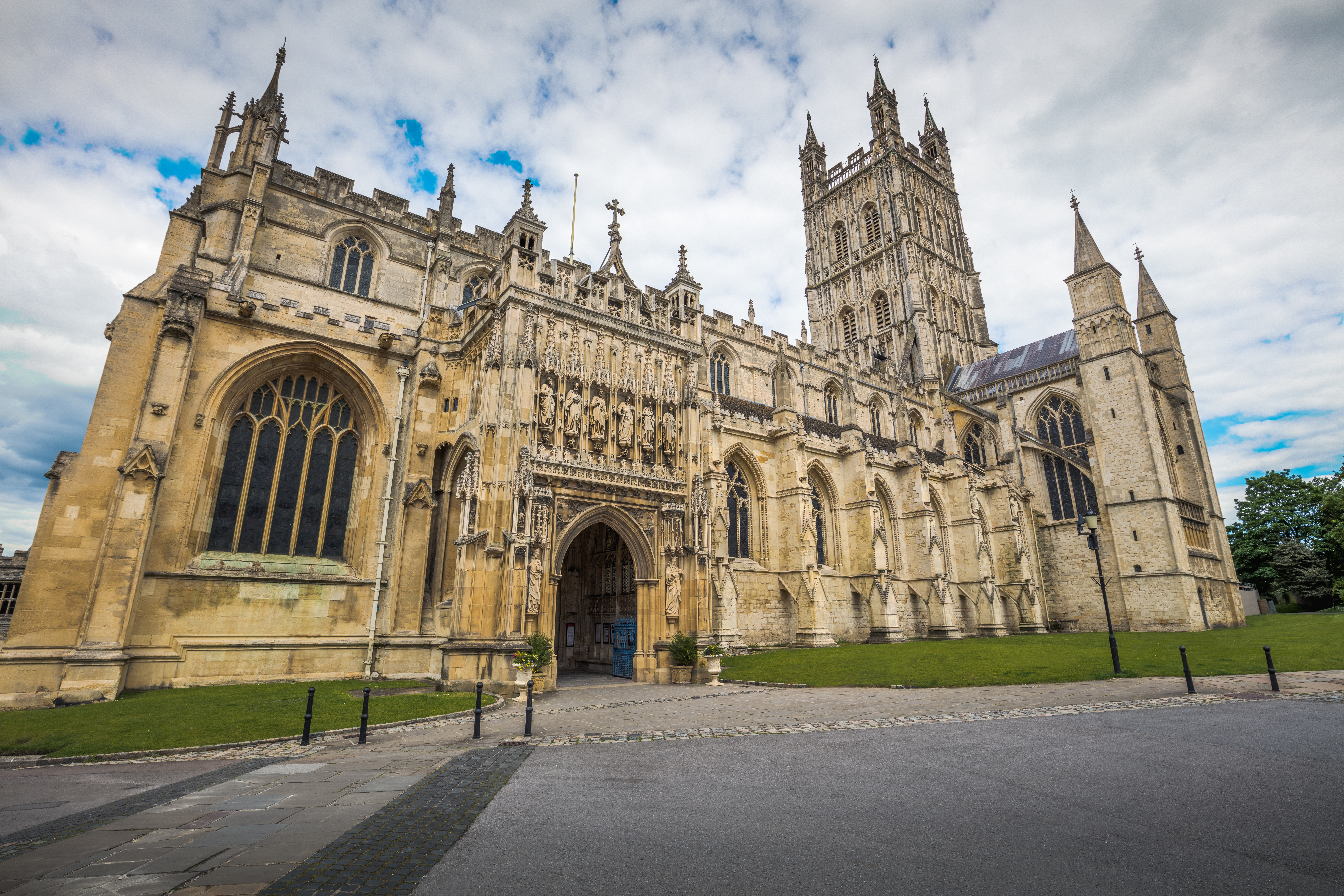|
Staffordshire And Worcestershire Canal
The Staffordshire and Worcestershire Canal is a navigable narrow canal in Staffordshire and Worcestershire in the The Midlands, England, Midlands of England. It is long, linking the River Severn at Stourport in Worcestershire with the Trent and Mersey Canal at Haywood Junction by Great Haywood. History Creation James Brindley was the chief engineer of the canal, which was part of his "Grand Cross" plan for waterways connecting the major ports at Kingston upon Hull, Hull (via the River Trent, Trent), Liverpool (via the River Mersey, Mersey), Bristol (via the River Severn, Severn) and London (via the River Thames, Thames). The act of Parliament (UK), act of Parliament authorising the canal, the (6 Geo. 3. c. 97), was passed on 14 May 1766. This created "The Company of Proprietors of the Staffordshire and Worcestershire Canal Navigation", which was empowered to raise an initial £70,000 (equivalent to £ in ),, with a further £30,000 (equivalent to £ in ), if needed, to fund ... [...More Info...] [...Related Items...] OR: [Wikipedia] [Google] [Baidu] |
James Brindley
James Brindley (1716 – 27 September 1772) was an English engineer. He was born in Tunstead, Derbyshire, and lived much of his life in Leek, Staffordshire, becoming one of the most notable engineers of the 18th Century. Born in the Peak District, which in those days was extremely isolated, Brindley received little formal education, but was educated at home by his mother. At age 17, encouraged by his mother, he was apprenticed to a millwright in exceptional skill and ability. Having completed his apprenticeship he set up business for himself as a wheelwright in Leek, Staffordshire. In 1750 he expanded his business by renting a millwright's shop in Burslem from the Wedgwoods who became his lifelong friends. He soon established a reputation for ingenuity and skill at repairing many different kinds of machinery. In 1752 he designed and built an engine for draining a coal mine, the Wet Earth Colliery at Clifton, formerly in Lancashire, now in Greater Manchester. Three years l ... [...More Info...] [...Related Items...] OR: [Wikipedia] [Google] [Baidu] |
Bristol
Bristol () is a City status in the United Kingdom, cathedral city, unitary authority area and ceremonial county in South West England, the most populous city in the region. Built around the River Avon, Bristol, River Avon, it is bordered by the ceremonial counties of Gloucestershire to the north and Somerset to the south. The county is in the West of England combined authority area, which includes the Greater Bristol area (List of urban areas in the United Kingdom, eleventh most populous urban area in the United Kingdom) and nearby places such as Bath, Somerset, Bath. Bristol is the second largest city in Southern England, after the capital London. Iron Age hillforts and Roman villas were built near the confluence of the rivers River Frome, Bristol, Frome and Avon. Bristol received a royal charter in 1155 and was historic counties of England, historically divided between Gloucestershire and Somerset until 1373 when it became a county corporate. From the 13th to the 18th centur ... [...More Info...] [...Related Items...] OR: [Wikipedia] [Google] [Baidu] |
Worcester And Birmingham Canal
The Worcester and Birmingham Canal is a canal linking Birmingham and Worcester in England. It starts in Worcester, as an 'offshoot' of the River Severn (just after the river lock) and ends in Gas Street Basin in Birmingham. It is long. There are 58 locks in total on the canal, including the 30 Tardebigge Locks, one of the longest lock flights in Europe. The canal climbs from Worcester to Birmingham. The canal also has connections with the Stratford-upon-Avon Canal, and the restored Droitwich Canal, it historically linked to the Dudley Canal Line No 2, until the route through the Lapal Tunnel was abandoned in 1917. History The parliamentary bill permitting its construction was passed in 1791 as the ( 31 Geo. 3. c. 59) empowering the company to raise £180,000 (equivalent to £ in ), through 1,800 shares at a cost of £100 each. It also allowed them to raise a further £70,000, if needed, amongst themselves or by the mortgage of tolls and rates. The act also pe ... [...More Info...] [...Related Items...] OR: [Wikipedia] [Google] [Baidu] |
Trow
A trow was a type of cargo boat found in the past on the rivers River Severn, Severn and River Wye, Wye in Great Britain and used to transport goods. Features The Mast (sailing), mast could be taken down so that the trow could go under bridges, such as the bridge at Worcester, England, Worcester and the many bridges up and downstream. The mast was stepped in a three sided frame open at the rear but closed with an iron pin or rope lashing. From the top of the mast a forestay ran down to the bow winch. To lower the mast the pin was removed and the winch slackened off to let the mast fall towards the stern. The reverse operation pulled the mast up. Despite their flat-bottomed hull form which made volume available for their load and permitted drying out on muddy banks in the tidal area where they operated, Trows were seaworthy. For example, with an added keel the Droitwich Trow ''Hastings'' is recorded as taking 90 tons of salt from Droitwich to France across the English Channel. ... [...More Info...] [...Related Items...] OR: [Wikipedia] [Google] [Baidu] |
Diglis
Diglis is an inner-city area and suburb of Worcester in Worcestershire, England. It is located around half a mile south of the city centre on the banks of River Severn. The Worcester and Birmingham Canal starts in Diglis, connected to the Severn. Diglis Lock is a wide-beam lock allowing river craft access to Diglis Basin. Diglis Island is a sliver of land in the middle of the River Severn opposite the opening of The Worcester and Birmingham Canal, which has featured art displays and tours. Diglis House Hotel sits on the banks of the River Severn to the south of Worcester Cathedral. The area immediately next to the river is often affected by flooding such as in autumn 2000 and summer 2007. New apartments have been built in Diglis and there has been some investment in the popular waterfront areas with tourists. Diglis Bridge, a pedestrian and cycle bridge across the Severn, opened in 2010 linking Diglis and St Peter's with Lower Wick. In 2021, Princess Anne Anne, Princ ... [...More Info...] [...Related Items...] OR: [Wikipedia] [Google] [Baidu] |
30 Geo
3 (three) is a number, numeral and digit. It is the natural number following 2 and preceding 4, and is the smallest odd prime number and the only prime preceding a square number. It has religious and cultural significance in many societies. Evolution of the Arabic digit The use of three lines to denote the number 3 occurred in many writing systems, including some (like Roman and Chinese numerals) that are still in use. That was also the original representation of 3 in the Brahmic (Indian) numerical notation, its earliest forms aligned vertically. However, during the Gupta Empire the sign was modified by the addition of a curve on each line. The Nāgarī script rotated the lines clockwise, so they appeared horizontally, and ended each line with a short downward stroke on the right. In cursive script, the three strokes were eventually connected to form a glyph resembling a with an additional stroke at the bottom: ३. The Indian digits spread to the Caliphate in the 9th ... [...More Info...] [...Related Items...] OR: [Wikipedia] [Google] [Baidu] |
Aldersley
Aldersley is a suburb of Wolverhampton, West Midlands (county), West Midlands, England. It is north-west of Wolverhampton city centre, within the Tettenhall Regis Ward (politics), ward. Aldersley is a relatively modern part of Wolverhampton, with most of the housing stock – both private and council – dating from after World War II. The Smestow Valley Leisure Ride starts here and the Staffordshire and Worcestershire Canal passes through the area. WV Active Aldersley, formerly named Aldersley Leisure Village and Aldersley Stadium is home to the Wolverhampton & Bilston Athletics Club, and Wolverhampton Wheelers Cycling Club who use its 450-metre tarmac banked velodrome. The centre has hosted the Professional Darts Corporation Grand Slam of Darts tournament since 2018. History The name 'Aldersley' is said by toponymists to come from 'Alor' - Old English for Alder as in Alder Tree, and 'lēah' - a woodland clearing, the name likely meaning a clearing in the Alder wood or woodland ... [...More Info...] [...Related Items...] OR: [Wikipedia] [Google] [Baidu] |
Birmingham Canal
The BCN Main Line, or Birmingham Canal Navigations Main Line is the evolving route of the Birmingham Canal between Birmingham and Wolverhampton in England. The name ''Main Line'' was used to distinguish the main Birmingham to Wolverhampton route from the many other canals and branches built or acquired by the Birmingham Canal Navigations company. BCN Old Main Line On 24 January 1767, a number of prominent Birmingham businessmen, including Matthew Boulton and others from the Lunar Society, held a public meeting in the White Swan, High Street, Birmingham''Smethwick and the BCN'', Malcolm D. Freeman, 2003, Sandwell MBC and Smethwick Heritage Centre Trust to consider the possibility of building a canal from Birmingham to the Staffordshire and Worcestershire Canal near Wolverhampton, taking in the coalfields of the Black Country. They commissioned the canal engineer James Brindley to propose a route. Brindley came back with a largely level but meandering route via Smethwick, Old ... [...More Info...] [...Related Items...] OR: [Wikipedia] [Google] [Baidu] |
Black Country
The Black Country is an area of England's West Midlands. It is mainly urban, covering most of the Dudley and Sandwell metropolitan boroughs, with the Metropolitan Borough of Walsall and the City of Wolverhampton. The road between Wolverhampton and Birmingham was described as "one continuous town" in 1785. The area was one of the Industrial Revolution's birthplaces. Its name was first recorded in the 1840s, and derives either from the thick coal seam close to the surface or the production of coal, coke, iron, glass, bricks and steel which produced high levels of soot and air pollution. Extent The Black Country has no single set of defined boundaries. Some traditionalists define it as "the area where the coal seam comes to the surface – so West Bromwich, Coseley, Oldbury, Blackheath, Cradley Heath, Old Hill, Bilston, Dudley, Tipton, Wednesbury, and parts of Halesowen, Walsall and Smethwick or what used to be known as Warley." There are records from the 18th century ... [...More Info...] [...Related Items...] OR: [Wikipedia] [Google] [Baidu] |
Gloucester
Gloucester ( ) is a cathedral city, non-metropolitan district and the county town of Gloucestershire in the South West England, South West of England. Gloucester lies on the River Severn, between the Cotswolds to the east and the Forest of Dean to the west; it is sited from Monmouth, from Bristol, and east of the England and Wales border, border with Wales. Gloucester has a population of around 132,000, including suburban areas. It is a port, linked via the Gloucester and Sharpness Canal to the Severn Estuary. Gloucester was founded by the Roman Empire, Romans and became an important city and ''Colonia (Roman), colony'' in AD 97, under Nerva, Emperor Nerva as ''Glevum, Colonia Glevum Nervensis''. It was granted its first charter in 1155 by Henry II of England, Henry II. In 1216, Henry III of England, Henry III, aged only nine years, was crowned with a gilded iron ring in the Chapter House of Gloucester Cathedral. Gloucester's significance in the Middle Ages is unde ... [...More Info...] [...Related Items...] OR: [Wikipedia] [Google] [Baidu] |
Staffordshire Potteries
The Staffordshire Potteries is the industrial area encompassing the six towns Burslem, Fenton, Hanley, Longton, Tunstall and Stoke (which is now the city of Stoke-on-Trent) in Staffordshire, England. North Staffordshire became a centre of ceramic production in the early 18th century, Fleming, John & Hugh Honour. (1977) ''The Penguin Dictionary of Decorative Arts. '' London: Allen Lane, p. 752. due to the local availability of clay, salt, lead and coal. Spread Hundreds of companies produced all kinds of pottery, from tablewares and decorative pieces to industrial items. The main pottery types of earthenware, stoneware and porcelain were all made in large quantities, and the Staffordshire industry was a major innovator in developing new varieties of ceramic bodies such as bone china and jasperware, as well as pioneering transfer printing and other glazing and decorating techniques. In general Staffordshire was strongest in the middle and low price ranges, though the fin ... [...More Info...] [...Related Items...] OR: [Wikipedia] [Google] [Baidu] |
Act Of Parliament (UK)
An act of Parliament in the United Kingdom is primary legislation passed by the UK Parliament in Palace of Westminster, Westminster, London. An act of Parliament can be enforced in all four of the Countries of the United Kingdom, UK constituent countries (England, Scotland, Wales and Northern Ireland). As a result of Devolution in the United Kingdom, devolution the majority of acts that are passed by Parliament increasingly only apply either to England and Wales only, or England only. Generally acts only relating to Reserved and excepted matters, constitutional and reserved matters now apply to the whole of the United Kingdom. A draft piece of legislation is called a Bill (law), bill. When this is passed by Parliament and given royal assent, it becomes an act and part of statute law. Contents of a bill or act A bill and an Act of Parliament typically include a short title and a long title, a number of clauses and, in many cases, one or more schedules. The ''Erskine May: Parli ... [...More Info...] [...Related Items...] OR: [Wikipedia] [Google] [Baidu] |









